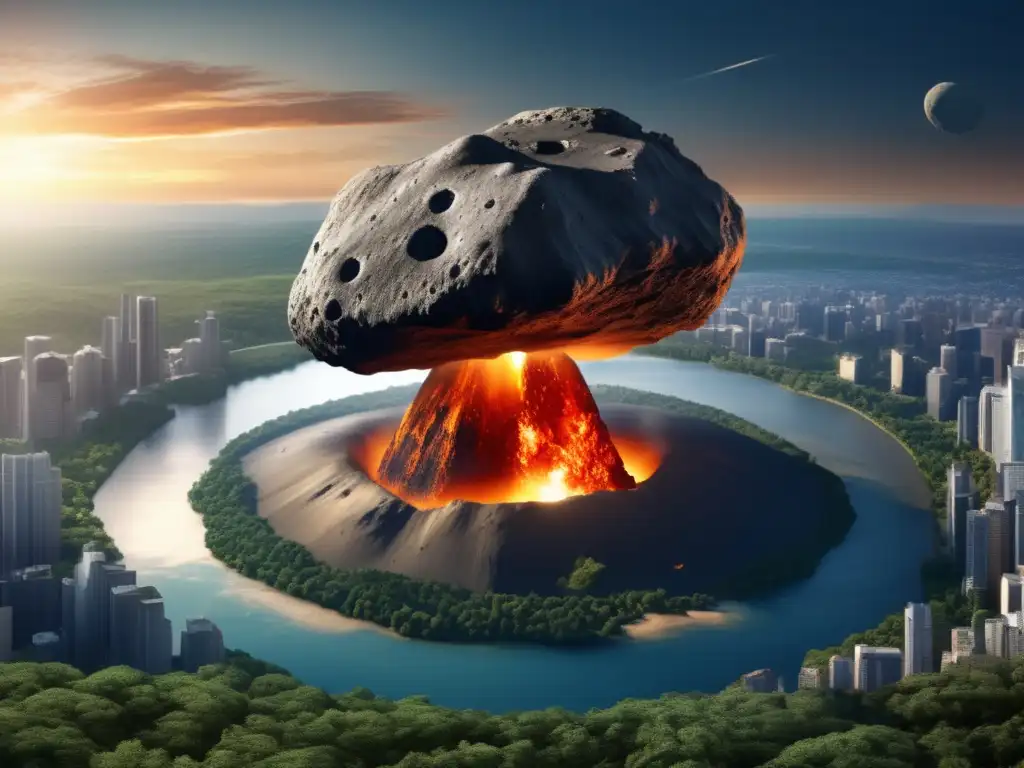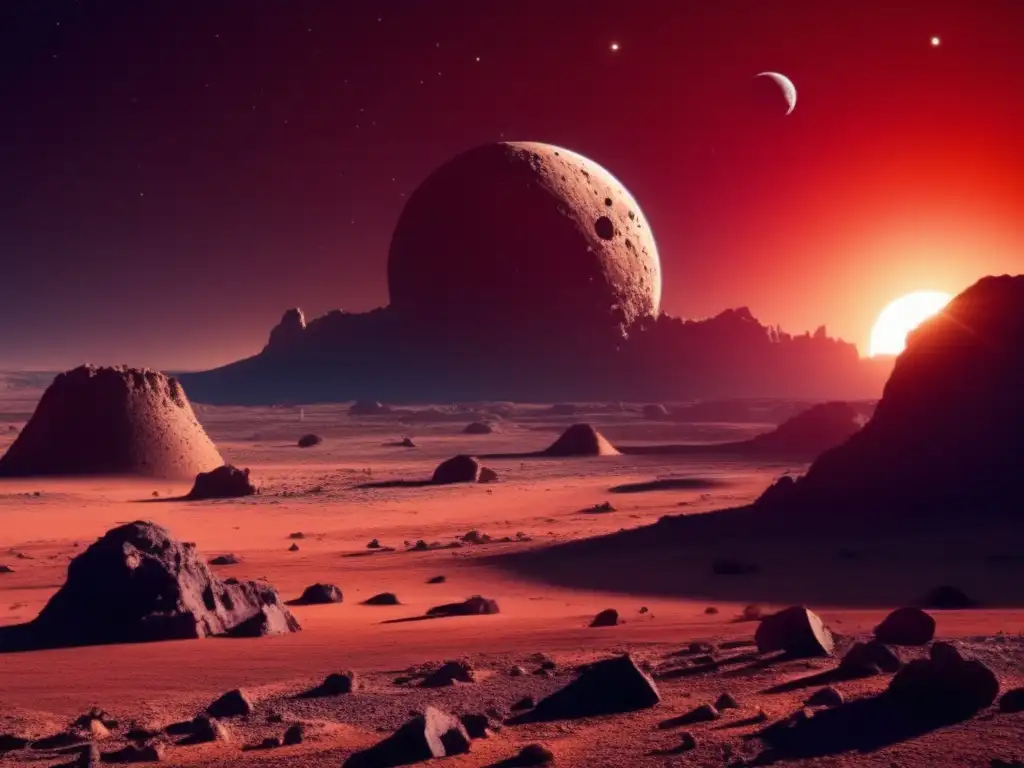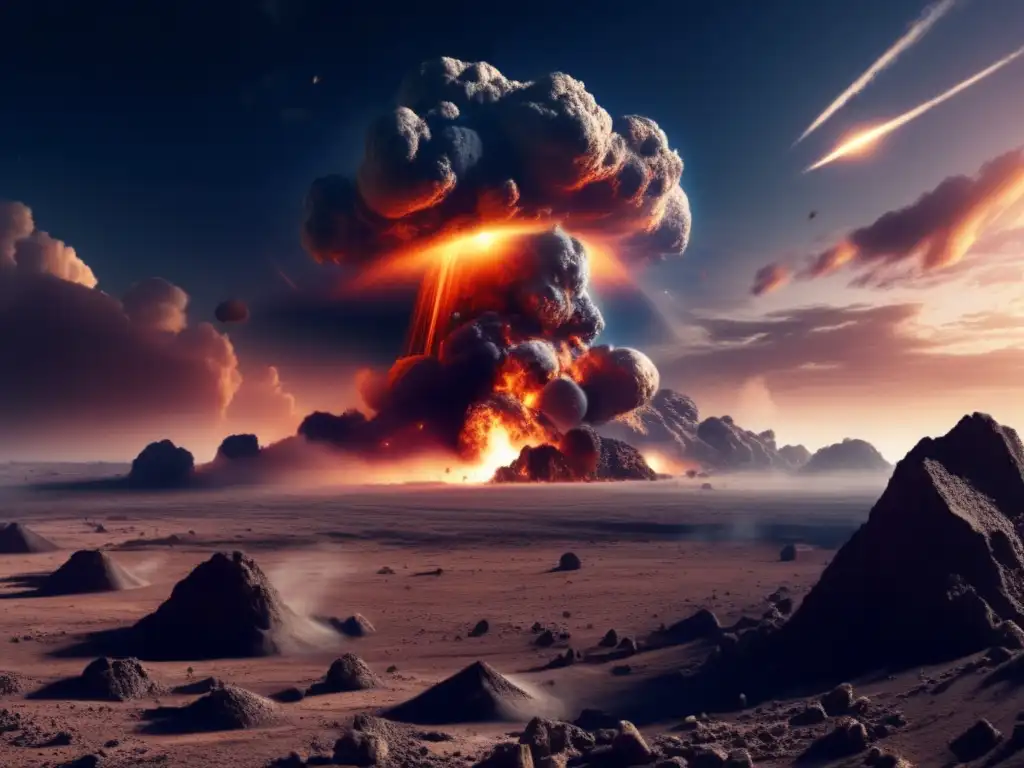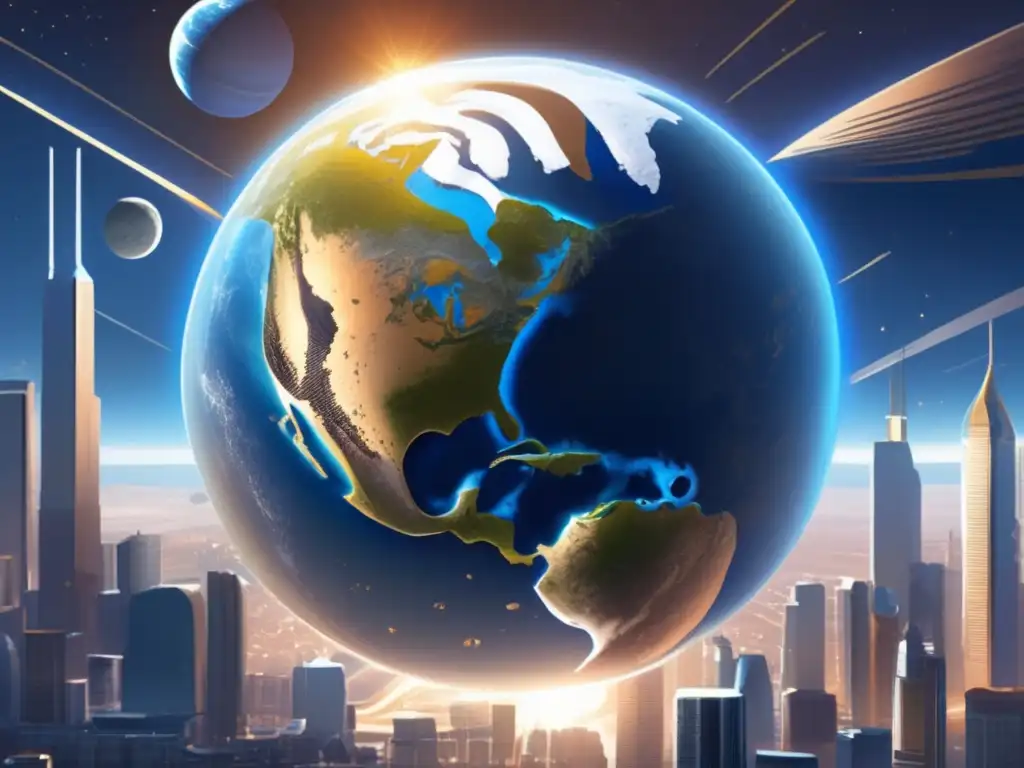Battered Earth: A Planet Shaped By Asteroid Impacts

Introduction
From the craters on the moon to the extinction of the dinosaurs, asteroid impacts have played a significant role in shaping our solar system. These celestial bodies are remnants from the early formation of the solar system and continue to orbit around the sun. Sometimes they cross paths with Earth, resulting in massive collisions that can have catastrophic consequences.
The History of Asteroid Impacts on Earth

The First Recorded Impact
The first recorded impact of an asteroid on Earth occurred in Siberia, Russia, around 1908. The Tunguska event, as it is known, was caused by an asteroid or comet that exploded in the atmosphere, releasing energy equivalent to 10-15 megatons of TNT. The explosion flattened trees over an area of 2,000 square kilometers and produced shock waves that were felt as far as 1000 kilometers away.
The Chicxulub Impact
The most famous and significant impact of an asteroid on Earth occurred 65 million years ago, at the end of the Cretaceous period. The asteroid that struck the Yucatan Peninsula of Mexico is estimated to have been 10 kilometers in diameter and released energy equivalent to 100 teratons of TNT. The impact caused widespread fires, earthquakes, and tsunamis, and is believed to have triggered the extinction of the dinosaurs and many other species.
The Role of Asteroids in Earth's History
Asteroid impacts have played a significant role in shaping the history of Earth. They have caused mass extinctions, created new habitats for life, and altered the climate and geology of the planet. For example, the impact that formed the Chicxulub crater may have led to a global cooling period that lasted for several years.
The Future of Asteroid Impacts on Earth

Identifying Asteroids that Pose a Threat
Scientists are actively searching for asteroids that pose a threat to Earth. The Near-Earth Object Program, managed by NASA, tracks and catalogs asteroids that come within 30 million miles of Earth. Several telescopes are also dedicated to detecting asteroids that could potentially collide with Earth.
Deflecting Asteroids
If an asteroid is identified as a threat, several methods have been proposed to deflect it. These include using spacecraft to nudge the asteroid off course, detonating a nuclear device near the asteroid, or painting one side of the asteroid white to change its reflectivity. However, these methods are still largely theoretical and have not been tested in practice.
Mining Asteroids
Asteroids contain valuable resources such as water, iron, and platinum. In the future, it may be possible to mine asteroids for these resources. However, there are also concerns that mining asteroids could lead to more frequent collisions with Earth if not done carefully.
Frequently Asked Questions

-
Can an asteroid impact wipe out all life on Earth?
It is possible, but unlikely. While large asteroid impacts can cause mass extinctions, some life forms, particularly those in deep-sea habitats, may survive.
-
How often do asteroid impacts occur?
Small asteroid impacts occur frequently, but large ones are rare. A dinosaur-killing impact may occur every 100 million years or so.
-
What is the likelihood of an asteroid impact in the near future?
The likelihood of a catastrophic asteroid impact on Earth in the near future is low, but not zero. Scientists estimate that there are still many undiscovered asteroids that could potentially collide with Earth.
-
What can we do to prevent or prepare for an asteroid impact?
Preventing an asteroid impact requires early detection and deflection. Preparedness measures, such as evacuation plans and emergency management, can also help minimize the impact of a collision.
-
What are the most likely effects of an asteroid impact on Earth?
The effects of an asteroid impact depend on its size and location. A large impact could cause mass extinctions, global climate change, and widespread destruction.
Conclusion
Asteroid impacts have played a significant role in shaping our solar system and the history of Earth. While the likelihood of a catastrophic impact in the near future is low, continued monitoring and research are essential to detecting and deflecting potential threats. By understanding the role of asteroids in our solar system, we can better appreciate the fragility of our planet and work towards protecting it from harm.
Additional Resources

- NASA's Planetary Defense Program
- American Meteor Society: Meteor Frequently Asked Questions
- Space.com: Asteroids, Meteors & Comets
 Craters Of The Moon And Earth: Comparing Impact Events
Craters Of The Moon And Earth: Comparing Impact Events The Yucatan Peninsula: Ground Zero For The Dinosaur Extinction
The Yucatan Peninsula: Ground Zero For The Dinosaur Extinction From Impact To Aftermath: The Lifecycle Of An Asteroid Strike
From Impact To Aftermath: The Lifecycle Of An Asteroid StrikeIf you want to discover more articles similar to Battered Earth: A Planet Shaped By Asteroid Impacts, you can visit the Asteroid Impacts category.
Leave a Reply

Articulos relacionados: